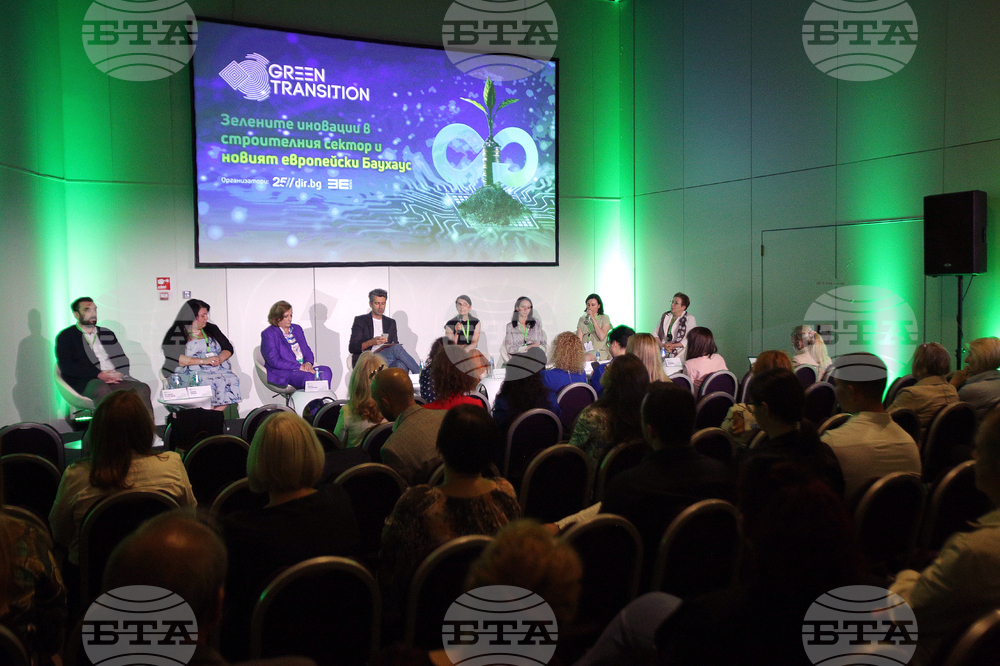The secrets of the new Bauhaus are hidden in the Bulgarian Renaissance house. This was said by Prof. Dr. Architect Yordanka Kandulkova, architect and teacher at UACD, at the round table “Green innovations in the construction sector and the new European Bauhaus”. It was part of the “Green Week 2023” forum launched yesterday for the green transition in the countries of Central and Eastern Europe, organized by dir.bg and 3E News. BTA is media partner of the event.
“Our Renaissance house is made of clay, stone and wood, and is an example of zero emission, if it is abandoned, it will be absorbed by the earth without damage to nature,” said architect Kandulkova. According to her, the Renaissance buildings are subjected to nature, the seasons, the aesthetics and “the attic does not need air conditioning”. “We must read these principles at the genetic level of the materials used in the past and carry them into the future,” said architect Kandulkova. According to her, the green transition and cultural heritage seem to contradict each other at first glance.
“The best way to hand over cultural heritage sites to the future is to use them effectively and look for specific solutions for their energy efficiency, but intervention – that is, facades and other reconstructions – should not damage the value of cultural monuments,” she insisted.
“The new European Bauhaus bears the iconic name of the German school of 100 years ago ‘Bauhaus’, which in the past related crafts to the aesthetics of modernism. Today, the new Bauhaus tries to combine the useful with the beautiful and the sustainable, and to unite art, crafts, technology and progress that modernize the world forward,” said Architect Aneta Vasileva, architectural critic, lecturer at UACD, founder of the “New Architectural Heritage” Foundation. According to her, construction is the biggest producer of waste in the world, so the key word in this industry is a green transition.
Iskra Mihailova, vice-chair of the Renew Europe group in the European Parliament, explained that the European Commission sees the new European Bauhaus not as a decoration, but as a response to the natural needs and desires of modern Europeans to live in a new way – closer to nature, to protect the environment, in sync with the cultural heritage and to be surrounded by a new design. She said that legislation is being created to fulfill the European’s desire to live a new way of life.
“The innovation hub will build capacity and talents, create prerequisites for Bulgarian enterprises to test digital products before ordering, provide funding and give access to partner organizations from Europe,” said Maria Nakova, economist and head of the “European Digital Innovation Hub ” in construction. According to her, the services are free and every entrepreneur from the sector is welcome.
Ani Kodjabasheva, writer and activist of the “Collective” foundation, an active partner of the new European Bauhaus, said that the foundation connects many different units, participants in the green transition. “We work with the local people, with the municipalities, with the businesses, with the institutions, with the BAS and we all understand the green deal differently, but the idea is that by working together, we achieve changes in the urban environment,” Kodjabasheva said. According to her, leaving their offices outside, the team of architects, designers, stylists, creators of the “Collective” achieve success.
Adriana Sabeva, co-founder of the urban transformation organization Gradoscope and founder of the communications agency Imp-Act Agency, said that we all manage cities together and the values of the new European Bauhaus are embedded in transformations.
“Our project “The Green Transition of the Stations” is an initiative for the development of urban areas, which advocates the motto “beautiful, sustainable and together”, said Sabeva.
Kiril Raichev, financial expert and chairman of the Alliance for Energy Efficiency, shared that technologies are key to building energy efficiency. “The green transition is a matter of effective results of energy transformation, decarbonization and others. In the delivery of services, efficiency must be guaranteed, which means that the contact between the contractor company and the building’s occupants must be until the end of their life journey. That is why digitization should be turned into an asset in this sector to help this feedback” said Raichev.
Arch. Hristo Stankushev, founder and manager of studio “7561 architects” and moderator of the event, wished all participants more frequent meetings to exchange experience, ideas and knowledge with the aim of faster realization of the new Bauhaus on native soil.
